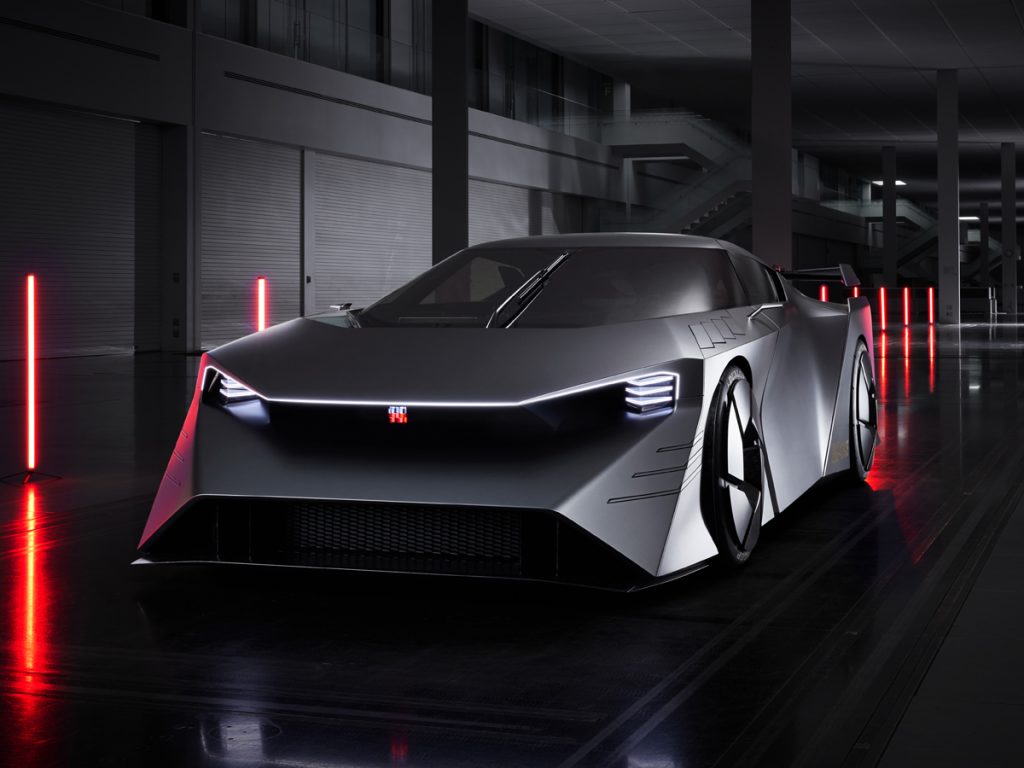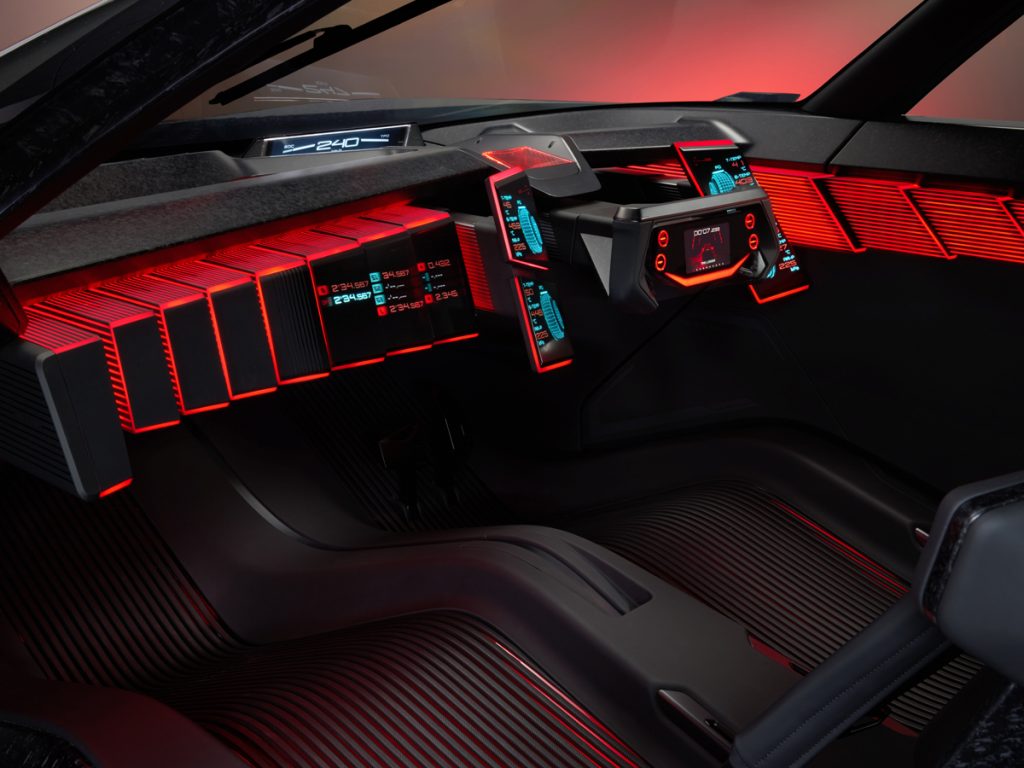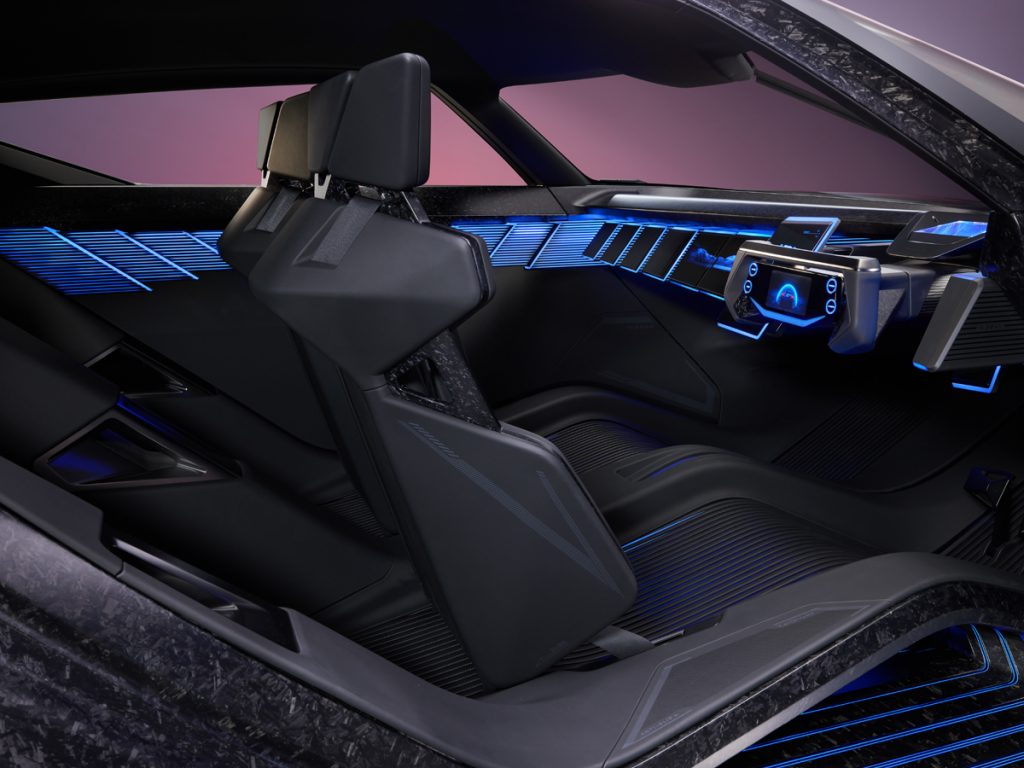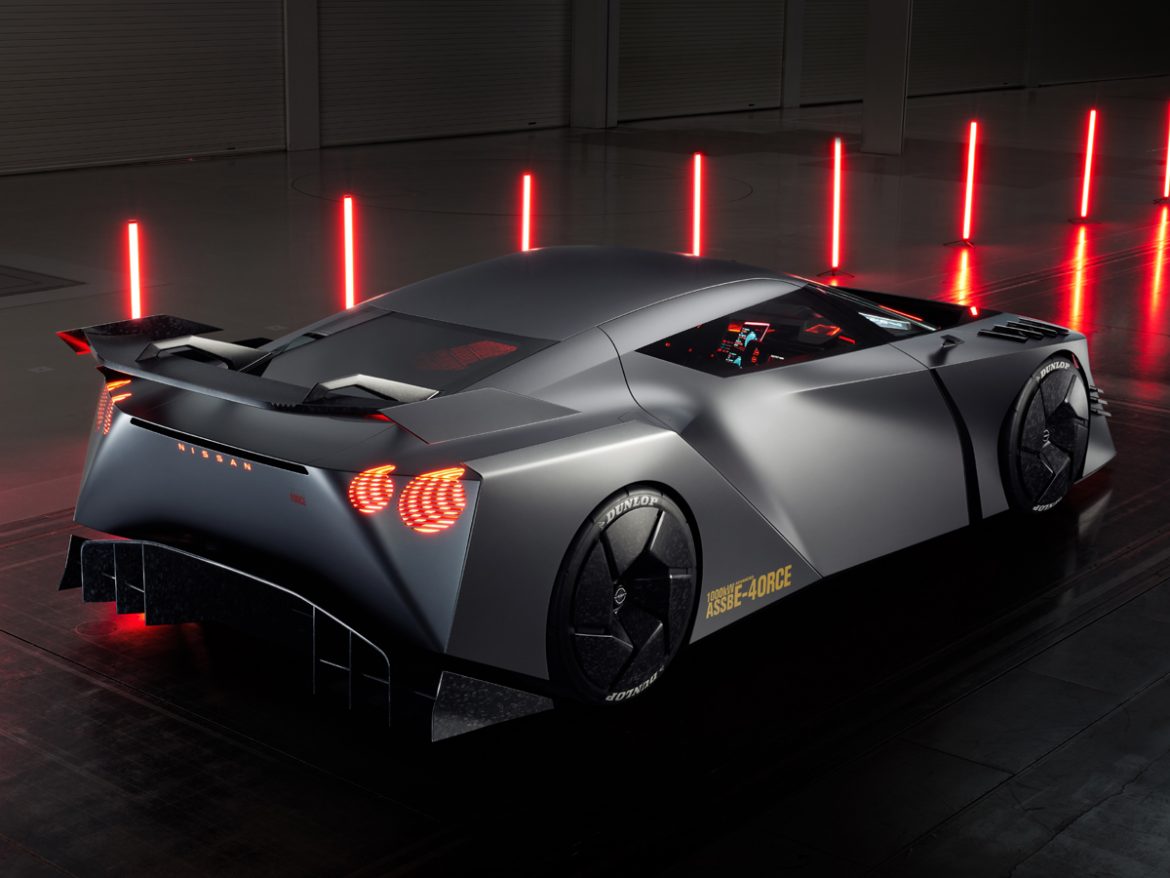At the opening of the Japan Mobility Show, Nissan pulled the wraps off the Hyper Force, the fifth and final offering in the brand’s ‘Hyper’ series of concept vehicles. Straight off the bat, the Hyper Force, though not an exact spitting image of the GT-R, does showcase the sports car’s signature design cues, especially the front and rear light units, along with the profile view. Though not explicitly confirmed by Nissan, some media reports state that the Hyper Force concept can be seen as a prelude to the next-gen, all-electric GT-R sports car.
At the core of the Hyper Force concept is a weight-balanced solid-state battery that has a claimed output of up to a massive 1,000kW (which is about 1,341bhp!). A high-strength carbon construction provides high downforce, and an advanced version of Nissan’s e-4ORCE all-wheel-drive system is responsible for power distribution. The motor layout/configuration has not been talked about yet. Other highlights include carbon fibre front seats with four-point seat belts, and hyper LIDAR sensors for advanced autonomous driving capabilities.
The Hyper Force concept’s aerodynamic prowess is a result of Nissan’s joint effort with the NISMO racing team. While the two-tier structure at the front provides strong downforce and high cooling performance, the dual-level rear diffuser controls airflow. The lightweight forged carbon wheels further aid the aero and brake cooling.

Designed with gaming enthusiasts in mind, the Hyper Force concept features two drive modes, ‘R’ (Racing) and ‘GT’ (Grand Touring). Depending on the mode selected, the user interface in the cockpit changes colour and display. The in-car graphics have been developed in collaboration with Polyphony Digital Inc., the studio best known for the Gran Turismo racing game series.
In ‘R’ mode, the cabin illuminates in red and creates an intuitive cockpit to aid concentration. While panels on the dash extend toward the seating space, the four satellite screens around the steering wheel display racing-related data and stats such as tyre grip and temperature, air pressure, brake rotor temperature, power distribution, etc.

In ‘GT’ mode, the cabin is illuminated in blue. The screens move away and combine to form a simpler infotainment interface. In this mode, the screens show suspension and stabiliser settings, which Nissan claims are a world-first that can be easily operated on screen while driving.

And this isn’t where the video game inspiration ends. The Hyper Force concept also offers an augmented reality (AR) and virtual reality (VR) experience that enables driving in both the real and the virtual world. With the help of special AR & VR visors, the driver can enter a gamified driving experience and can even compete against their own, friends’ or even professional drivers’ digital ghosts on a race circuit. Of course, to experience the AR & VR features, the vehicle has to be stationary.
Nissan’s aim to launch a solid-state EV in 2028
Keeping all of its gizmos and video game gadgetry aside, the Hyper Force concept brings to the fore Nissan’s plan to begin solid-state battery production. In early 2023, the Japanese brand announced its plans to have a pilot solid-state battery production plant operational by 2025 and begin mass production by 2028, followed by the launch of the first solid-state EV in the same year.



